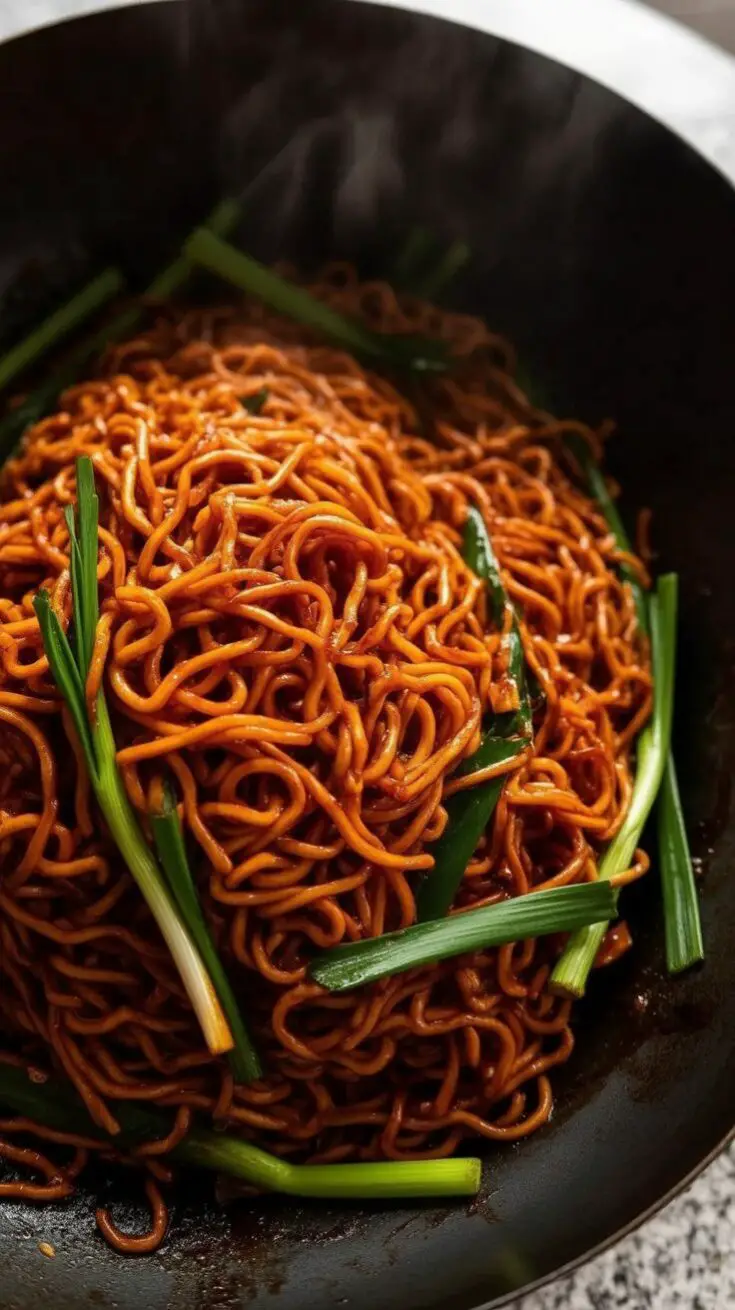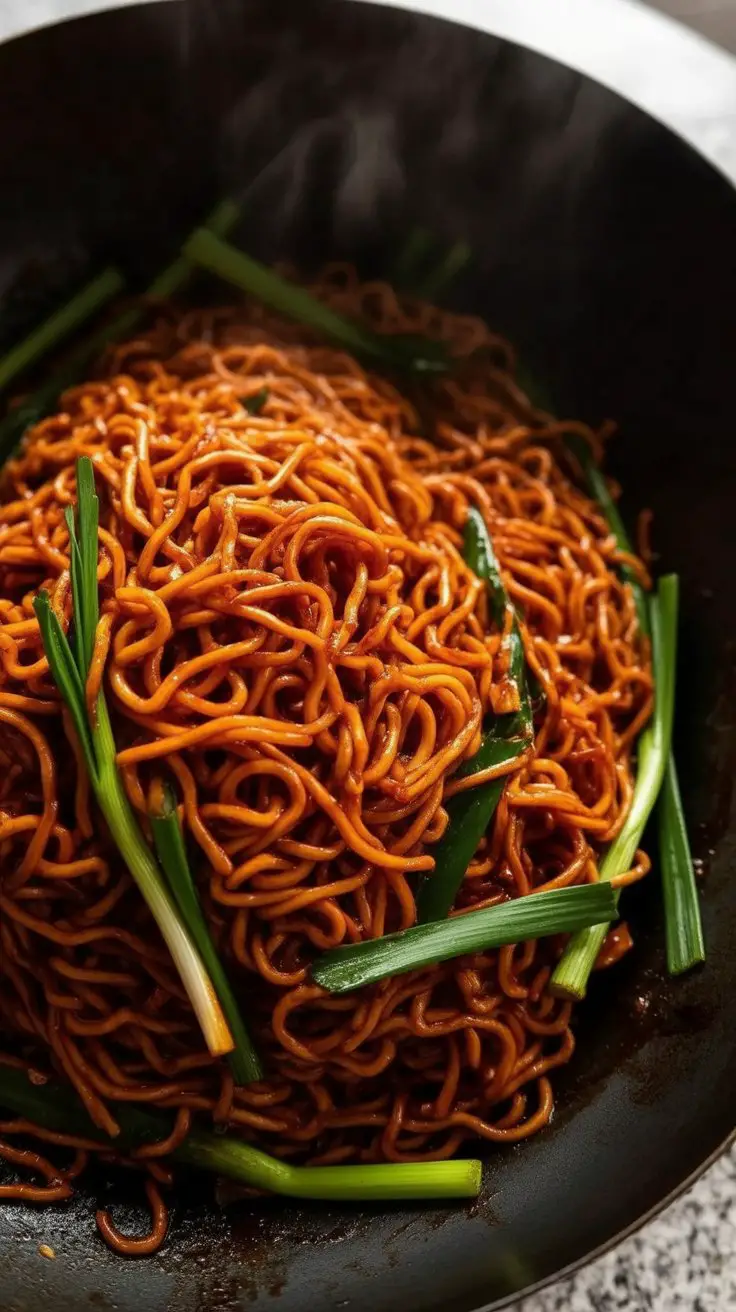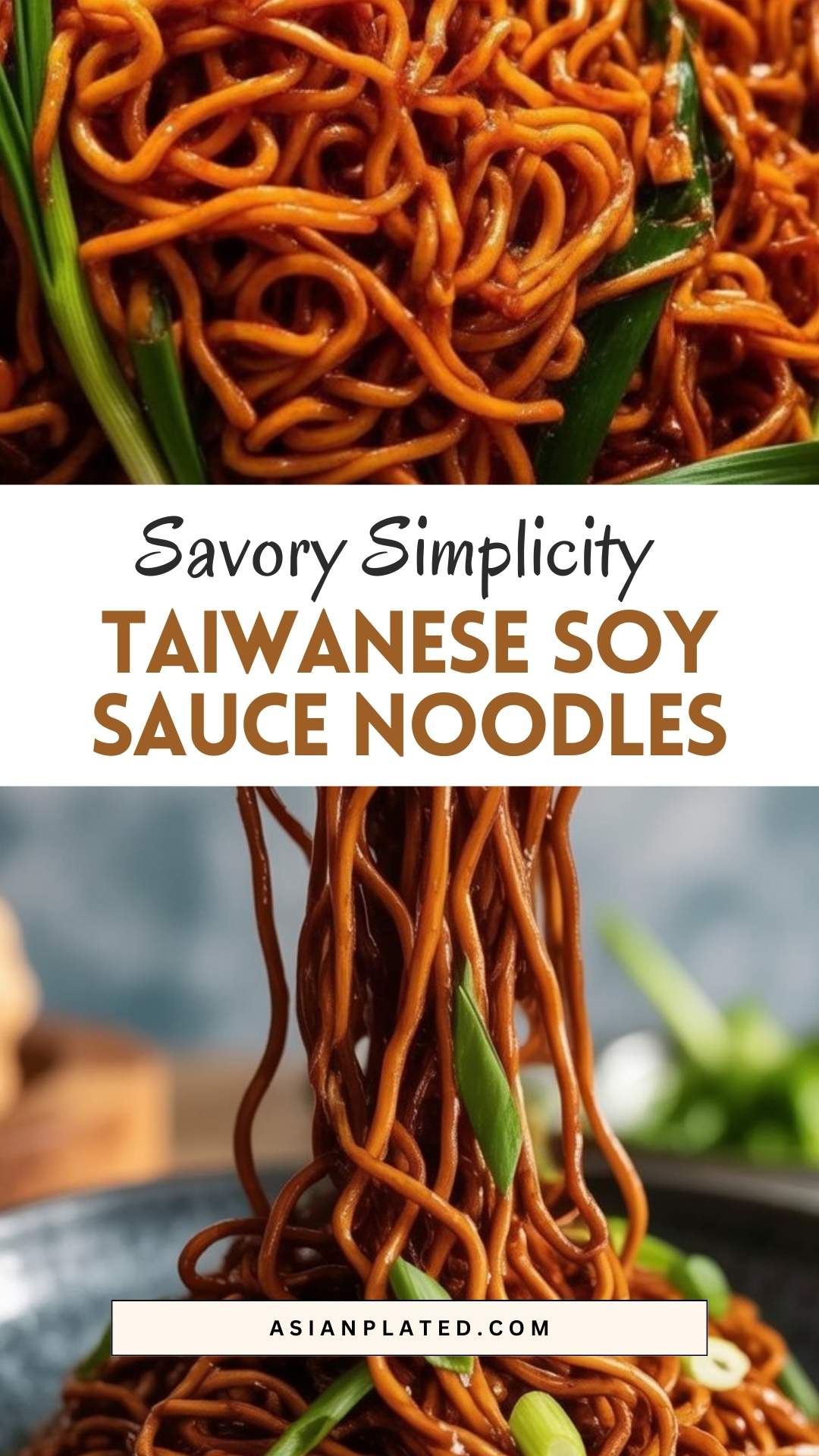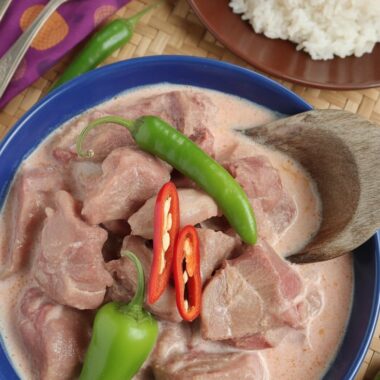I can’t tell you how many times these noodles have saved dinner at my place. They’re the kind of recipe you fall back on when you’re hungry, tired, and just want something that feels like a treat but takes less time than deciding what to order. Whether it’s for a quick lunch or a last-minute side for dinner, these noodles never disappoint.
 Why These Noodles Are Always on My Table
Why These Noodles Are Always on My Table
This dish has become a bit of a family favorite. I make it when friends drop by unexpectedly or when I need a simple side to go with stir-fried chicken or some quick pan-seared fish. The balance is what I love most: flavorful enough to eat straight from the pan, but not so bold that it steals the spotlight from whatever you’re pairing it with.
I still remember the first time I served these at a weekend barbecue with grilled chicken skewers. I thought they’d just be a filler, but they were the first dish to vanish. That’s when I realized I should probably start doubling the recipe.
Ingredients You’ll Need and Why They Work
Here’s my take on the magic behind these noodles:
Soy sauces – I like using both dark and light soy sauce. The dark one gives that deep color and richer taste, while the light one adds a nice salty balance. If you only have regular soy, don’t panic — just use what you have.
Oyster sauce – This is what makes people wonder what’s in the dish. It’s savory, slightly sweet, and just ties everything together. And no, it doesn’t taste fishy.
Mirin – A splash of this sweet cooking wine rounds out the sauce beautifully. When I’m out of it, I’ll just add a little extra oyster sauce for that hint of sweetness.
Toasted sesame oil – That nutty aroma is what makes the noodles taste like they came straight from a restaurant wok.
Green onions and garlic – These build the base flavor and give the noodles that fresh, aromatic kick.
Noodles – Fresh noodles are my first choice for their chewy texture, but I’ve even used spaghetti in a pinch. Honestly, once it’s tossed in that sauce, no one notices.
Step-by-Step: How I Make It
Mix the sauce – I do this first so I can just grab it when the pan is hot.
Cook the noodles – I always cook them right before stir-frying. Letting them sit makes them sticky and clumpy.
Sauté the aromatics – Garlic and the white parts of the green onion go in first. That smell? That’s when everyone in the house wanders into the kitchen asking when dinner’s ready.
Toss the noodles – Coat them in the sauce, and let them sit just long enough to get those little caramelized bits. That’s the secret to the flavor.
Finish with green onions – The green tops wilt just enough to keep their color and crunch.
 Tips I’ve Learned Along the Way
Tips I’ve Learned Along the Way
Keep the pan hot, but don’t overcrowd it. If I’m doubling the recipe, I cook the noodles in two batches so they stay nice and glossy.
If your noodles clump after rinsing, just loosen them with a quick drizzle of sesame oil.
Got picky eaters? Toss in some thinly sliced chicken or a handful of shrimp to make it a full meal.
Make-Ahead and Leftovers
This recipe is best eaten fresh, but leftovers reheat surprisingly well. I splash a little water in the pan and stir-fry them for a minute or two to bring them back to life. If I’m making them ahead for a party, I keep the noodles and sauce separate, then toss them together just before serving.
What to Pair It With
These noodles are the quiet hero of my weeknight dinners. Here are a few ways I like to serve them:
With grilled chicken skewers or teriyaki salmon
Alongside dumplings for a quick dinner
Topped with a fried egg when I’m cooking just for me
Paired with roasted vegetables for a light but satisfying meal
 Common Questions
Common Questions
Can I make this vegetarian?
Absolutely. Swap the oyster sauce for a vegetarian stir-fry sauce or mushroom-based soy sauce, and you’re good to go.
Can I add vegetables?
Yes, but keep it light — a handful of shredded carrots or snow peas is perfect. If you want to pack in more veggies, try my Lo Mein variation with a slightly thicker sauce.
Can I use dried noodles?
Yes! Just cook them al dente and rinse them to keep them from sticking.
Taiwanese Soy Sauce Noodles

A simple yet flavor-packed noodle dish that proves soy noodles don’t have to be boring. Tossed with garlic, scallions, sesame oil, soy sauce, and oyster sauce, these noodles are savory, slightly sweet, and just caramelized enough to make them irresistible. Perfect as a quick side or light meal on their own!
Ingredients
- 500 g / 1 lb fresh yellow or white noodles (medium thickness – Shanghai, Hokkien, or lo mein are best; see Notes for dried noodle option)
- 2 tbsp oil (vegetable, canola, or peanut)
- 8 green onions, ends trimmed, cut into 2.5" (7 cm) lengths (separate white and green parts)
- 2 garlic cloves, finely chopped
Soy Sauce Noodle Sauce:
- 2 tsp toasted sesame oil
- 2 tsp light soy sauce
- 1 tbsp dark soy sauce
- 1 tbsp oyster sauce
Instructions
- Mix Sauce – In a small bowl, whisk together all sauce ingredients.
- Cook Noodles – Prepare noodles according to package directions. Drain, rinse briefly under cold water to prevent sticking, then set aside.
- Sauté Aromatics – Heat oil in a large wok or deep skillet over high heat. Add the white parts of the green onions and cook for 20 seconds. Add garlic and sauté for 10 seconds until fragrant and lightly golden.
- Toss with Sauce – Add noodles to the pan, then pour over the sauce. Toss well for 1 ½ minutes, letting the noodles caramelize slightly for the best flavor.
- Finish & Serve – Add the green parts of the green onions and toss for about 20 seconds until just wilted. Serve hot.
Notes
- Noodles: Fresh noodles give the best texture. If using dried noodles (egg, rice, ramen, or even spaghetti), use 250 g / 8 oz uncooked – it will yield the same as 500 g fresh once cooked.
- Soy Sauce: Light soy can be swapped with all-purpose soy. Dark soy gives color and depth but can be replaced with more light soy if needed.
- Oyster Sauce: Adds sweetness and umami. Hoisin sauce is an acceptable sub (slightly different flavor). Vegetarian oyster sauce works too.
- Mirin Substitute: Use Chinese cooking wine or dry sherry + 1 tsp sugar. For alcohol-free, add 1 tbsp extra oyster sauce.
- Storage: Keeps 4–5 days in the fridge. Freezing not recommended.
Nutrition Information:
Yield: 5 Serving Size: 1Amount Per Serving: Calories: 223Total Fat: 8gSaturated Fat: 1gTrans Fat: 0gUnsaturated Fat: 7gCholesterol: 0mgSodium: 424mgCarbohydrates: 31gFiber: 2gSugar: 1gProtein: 6g
Asianplated.com, occasionally offers nutritional information for recipes contained on this site. This information is provided as a courtesy and is an estimate only. This information comes from online calculators. Although allchickenrecipes.com attempts to provide accurate nutritional information, these figures are only estimates.
My Final Thoughts
This recipe started as a quick way to use up leftover noodles, and now it’s a staple in my kitchen. It’s one of those dishes that fits into your week no matter how busy you are. I’ve made it for quiet weeknights, potluck dinners, and even camping trips with a portable stove. Every single time, someone asks for the recipe — and that’s how you know you’ve got a keeper.
Try other Taiwanese recipes:

 Why These Noodles Are Always on My Table
Why These Noodles Are Always on My Table Tips I’ve Learned Along the Way
Tips I’ve Learned Along the Way Common Questions
Common Questions















